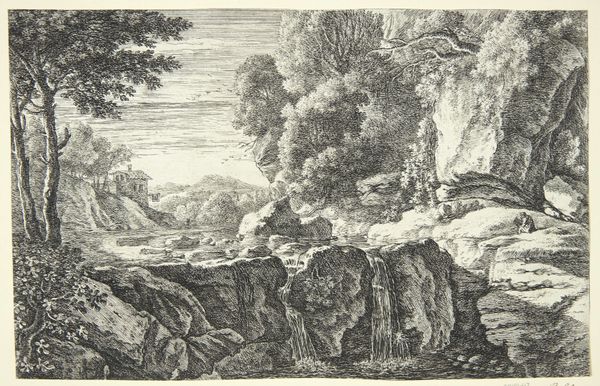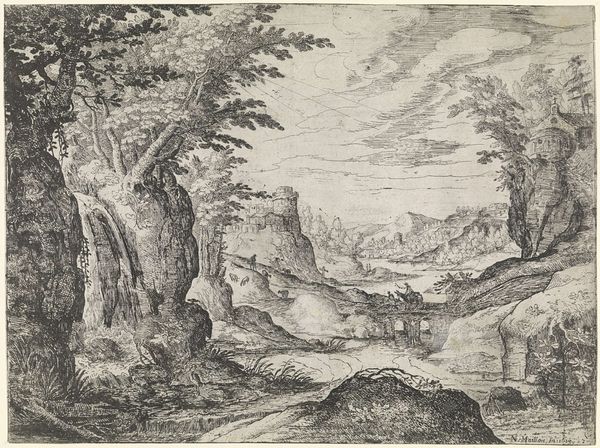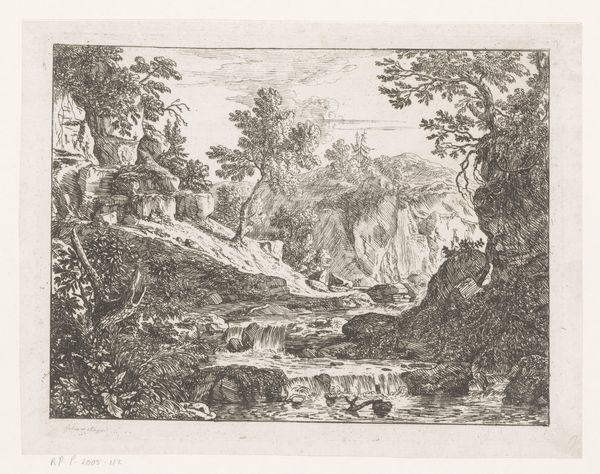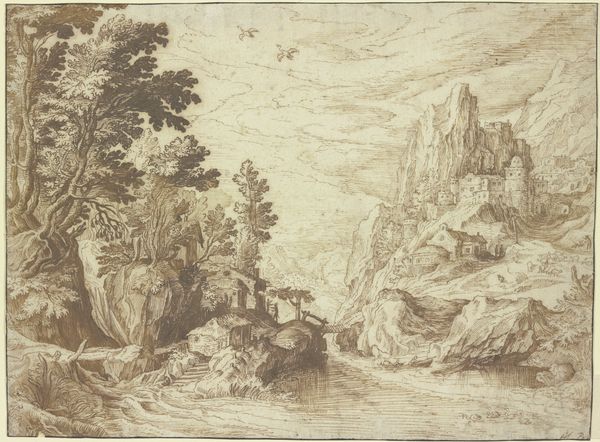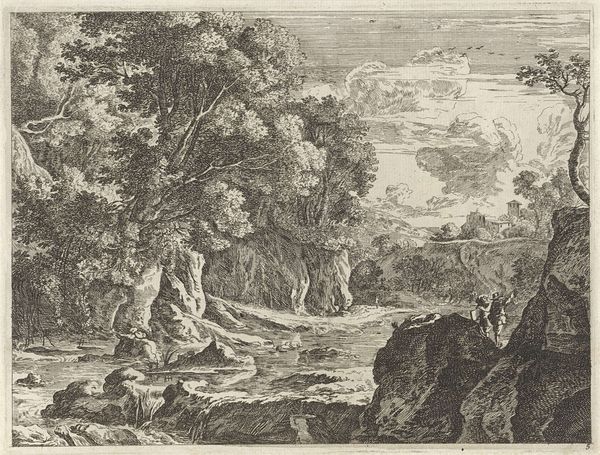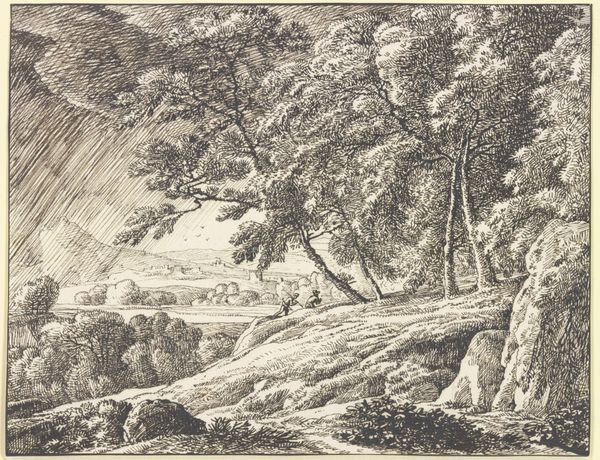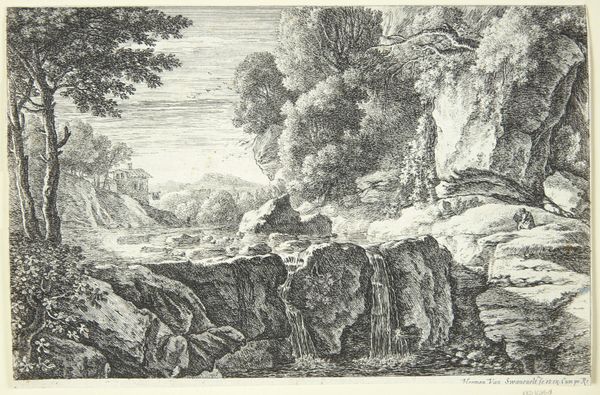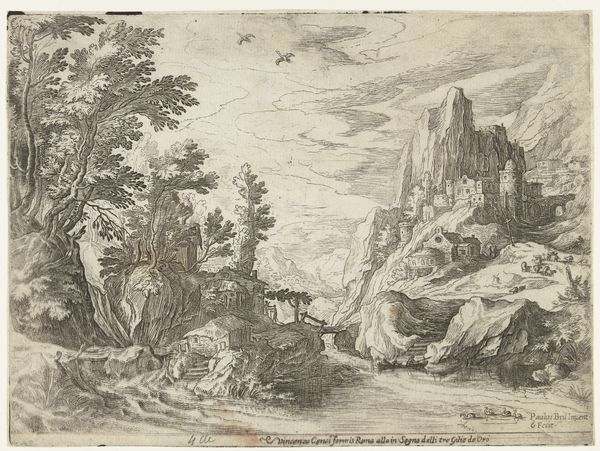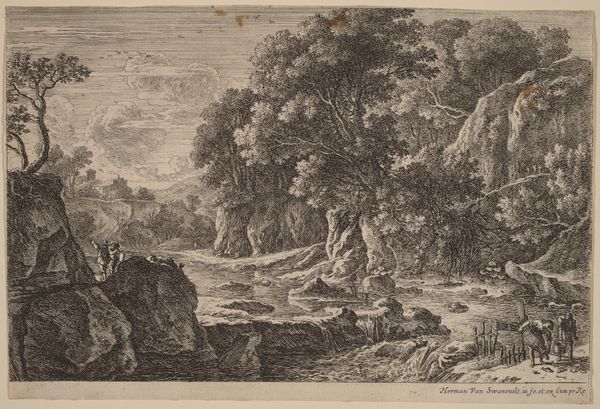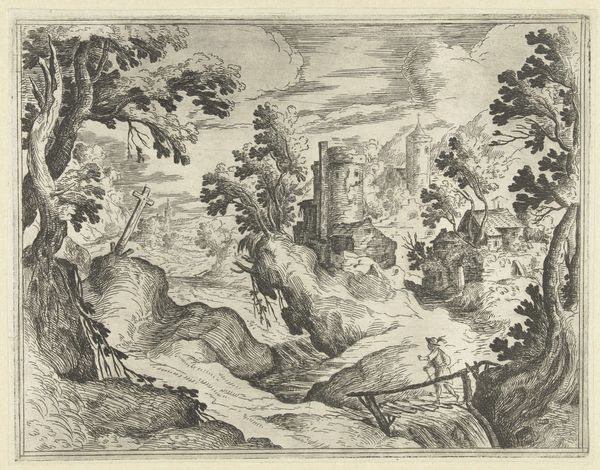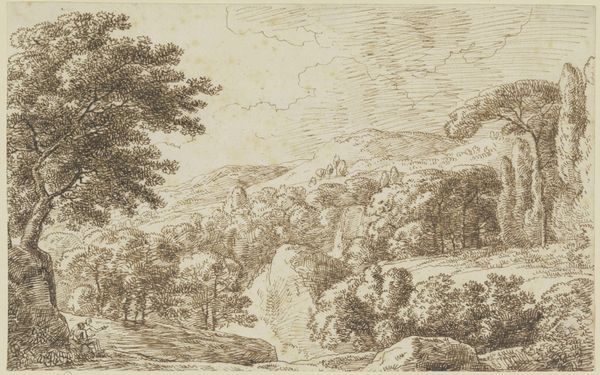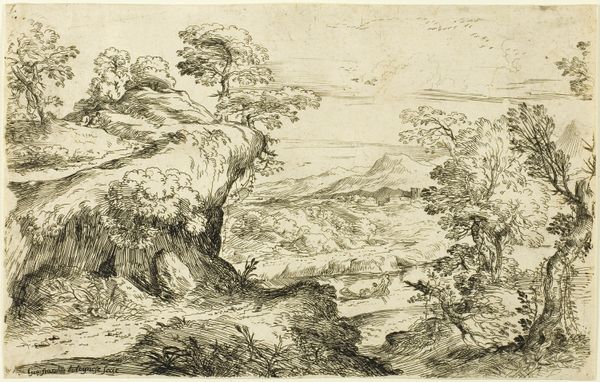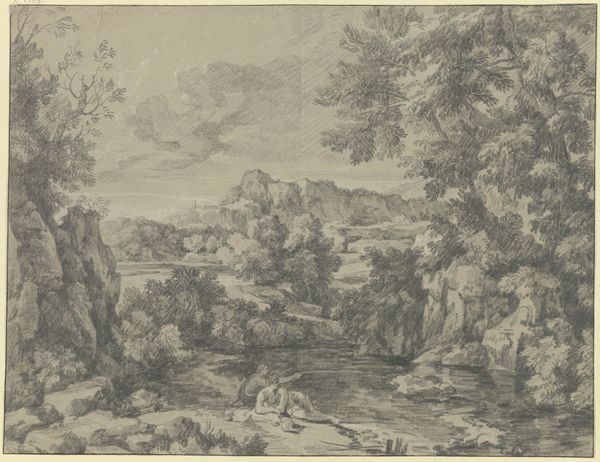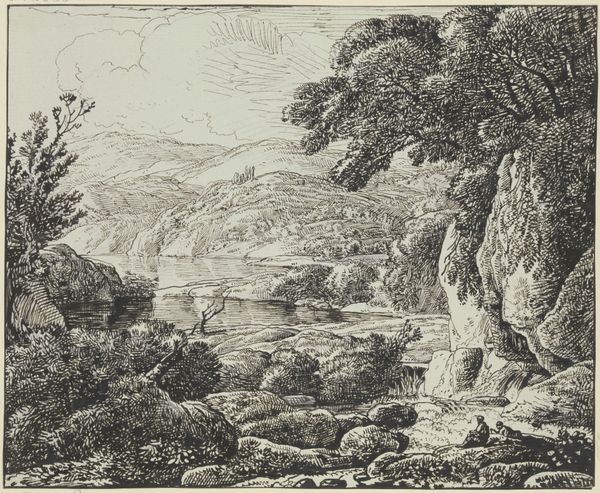
print, etching
#
baroque
# print
#
etching
#
landscape
#
pencil drawing
Copyright: National Gallery of Art: CC0 1.0
Curator: Welcome to this viewing of Herman van Swanevelt’s etching, "The Small Waterfall." Observe how the landscape seems to invite us into its detailed intricacies. Editor: There's a quiet stillness to it, don’t you think? Despite the presence of the waterfall, it feels incredibly serene. Almost meditative. The light and shadow play really draws me in. Curator: Swanevelt, a key figure in the development of the Baroque landscape, created this print during a period when the Roman Campagna became a popular subject for artists. His engagement with depicting nature went beyond simple visual representation. Editor: Interesting! I immediately start thinking about how nature is represented and how that reinforces ideas about ownership, and dominion, particularly in the context of the Baroque era with its political complexities. It’s never *just* landscape, is it? Who benefits from its perceived innocence? Curator: Indeed, and that era was marked by significant social hierarchies. This landscape becomes a site for considering patronage and the culture of collecting, echoing those power structures. There's a small building on a rise in the middle ground that certainly alludes to wealthy ownership and property. Editor: And while seemingly bucolic, consider the labor implicit in shaping even what we think of as "natural" landscapes. We often ignore that the composition here relies on selective framing of "wilderness," a kind of stagecraft where the lived realities of many are edited out of the picture. Where are the farmers, or other workers present at this site? What does their exclusion imply about whose vision this landscape promotes? Curator: The meticulous etching technique brings a remarkable sense of depth and atmosphere to this landscape print. There's a careful balance in the composition between the ordered aspects of the Roman ideals, juxtaposed with the wildness of the natural world, reflecting Baroque artistic practices. Editor: Yes, I’m still drawn to this composition! Its use of light and shadow makes one contemplate themes related to identity, the self in relationship to nature. Despite the absence of identifiable figures—besides that lone man—I feel this connects to human narratives. It serves to place viewers both within and outside this ideal realm. Curator: Reflecting on our exchange, it's enlightening how a landscape can be simultaneously a study of the natural world and a cultural document deeply rooted in history. Editor: Precisely. These visual records—"picturesque" or not—hold more nuanced implications. Considering how those are conveyed encourages us toward more reflective, politically aware readings of history, art, and the world around us.
Comments
No comments
Be the first to comment and join the conversation on the ultimate creative platform.
